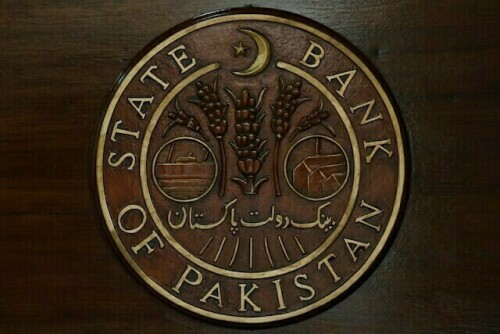Upcoming Monetary Policy Decision: Analysts Forecast Diverse Outcomes
The State Bank of Pakistan’s (SBP) Monetary Policy Committee (MPC) is convening soon for its third assembly this year, and financial experts hold contrasting views regarding the anticipated result.
During its session on March 10, the MPC decided to keep the policy rate steady at 12%. The interest rate has been reduced by 1,000 basis points since June 2024.
Market Projections
Financial market observers are indecisive concerning the central bank’s forthcoming action.
Arif Habib Limited (AHL) suggested that the SBP might reduce the primary policy rate by 50 basis points (bps), bringing it to 11.5%.
AHL’s report mentioned the potential for a measured rate decrease to bolster economic advancement without jeopardizing macroeconomic stability, considering the consistent disinflationary pattern and substantial real interest rate buffer.
Conversely, analysts at Topline Securities projected that the central bank’s MPC would preserve the existing situation, pointing to aspects such as the International Monetary Fund (IMF) assessment and the potential for US tariffs.
The report highlighted that the anticipated foreign capital inflows for the second half of fiscal year 2025 have not yet occurred and are projected to be received after the IMF board approves the initial review (prior to June 2025).
The IMF’s press release regarding the staff-level agreement also indicated Pakistan’s commitment to sustaining a sufficiently stringent monetary policy to maintain low inflation.
Furthermore, the report stated that in light of ongoing uncertainties surrounding US tariffs, the central bank is expected to maintain the status quo until more clarity arises regarding this global matter.
Similarly, a poll indicated that the SBP is expected to maintain its benchmark interest rate at 12% due to geopolitical factors and the inflation forecast.
Ahmad Mobeen, a senior economist noted that the bank will probably adopt a cautious strategy in light of a volatile trade environment, persistent core inflation, and an impending International Monetary Fund evaluation.
Previous MPC Announcement
The central bank’s MPC decided to keep the policy rate unchanged at 12% during its most recent meeting, which differed from market predictions.
The committee emphasized that economic activity is still gaining momentum, as evidenced by the most recent high-frequency economic indicators.
The MPC also noted the emergence of certain pressures on the external account as a result of rising imports and weak financial inflows.
The MPC determined that the current real interest rate is sufficiently positive on a forward-looking basis to maintain the existing macroeconomic stability.
Since the last MPC meeting, there have been numerous significant economic developments.
The rupee’s value has decreased by 0.4%, while petrol prices have decreased by 1.2%.
Since the last MPC meeting, international oil prices have decreased, hovering at approximately $61 per barrel due to improved supply.
According to data from the Pakistan Bureau of Statistics (PBS), Pakistan’s headline inflation was 0.3% year over year in April 2025, which is lower than the 0.7% recorded in March 2025.
Furthermore, Pakistan’s current account (C/A) showed a substantial surplus of $1.2 billion in March 2025, compared to a deficit of $97 million the previous month. The C/A increased by 230% year over year, compared to a surplus of $363 million in the same month last year.
The SBP’s foreign exchange reserves increased by $9 million on a weekly basis, reaching $10.21 billion as of April 25.
The country’s total liquid foreign reserves were $15.25 billion. Commercial banks held net foreign reserves of $5.04 billion.



Comments (0)
No comments yet. Be the first to comment!
Leave a Comment